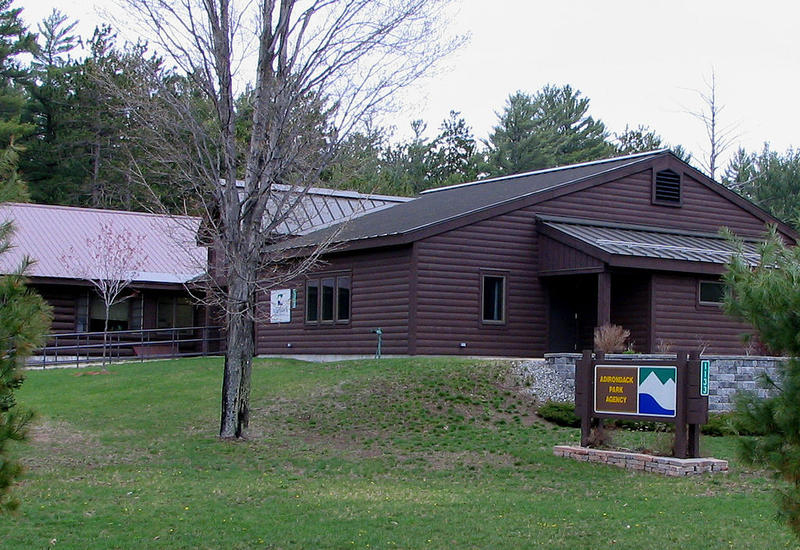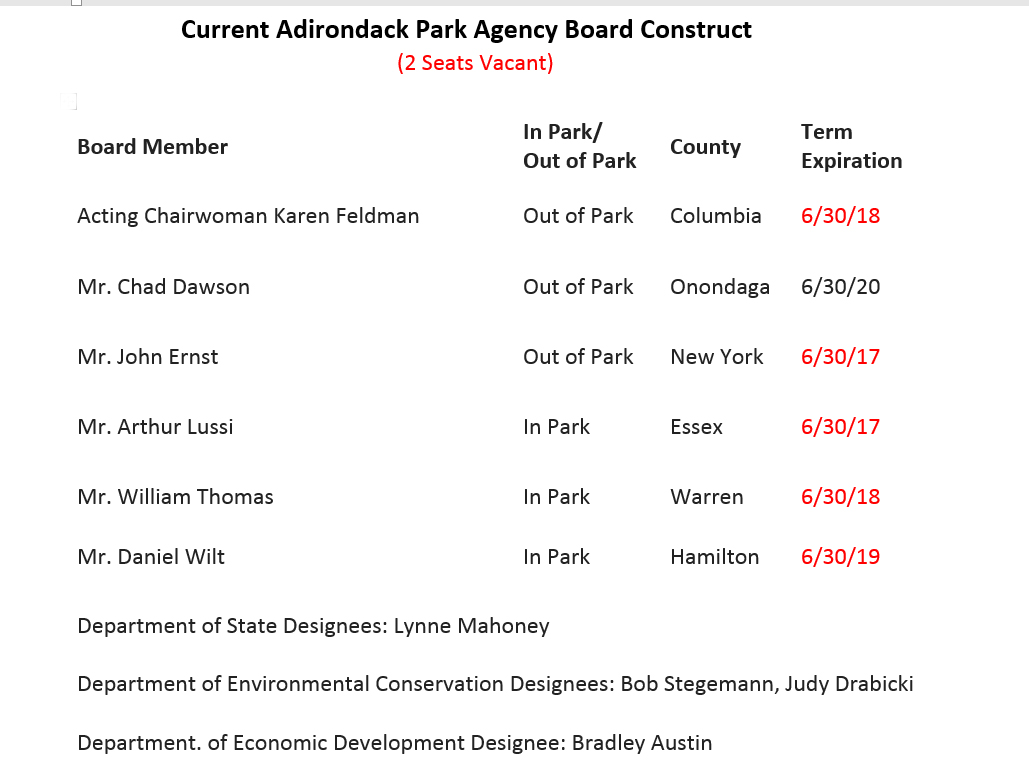
Adirondack Park Agency Poised for Change
By: Casey Marvell - Adirondack Council's Policy Fellow
Monday, March 11, 2019
Each year, 12 million visitors venture to the Adirondack Park to enjoy fresh mountain air, clean waters, quiet pristine forests, and a chance to get a glimpse of its unique wildlife. Whichever way we choose to immerse ourselves in the Park, we are all witnesses to one of the greatest global environmental conservation success stories in history. By exploring the largest intact temperate deciduous forest in the world, Adirondack enthusiasts are used to experiencing a Park that undergoes frequent changes, whether it be the seasons or natural events like falling trees and beaver damming.
Changes to the Park the Horizon?
However, right now, the most notable changes coming to the Park may actually be at the Adirondack Park Agency (APA), a state agency that develops and provides oversight of long-range public and private land use plans for the Adirondack Park. The makeup of decision makers at the APA, the Board of Commissioners, may soon be changing, which may alter how the Adirondack Park looks in the future. Under state law, the Governor gets to nominate people for the APA board, and the state Senate must confirm the nominees. So those of us who support the Adirondacks must focus on this process, and how this will shape our Adirondack Park experience.

The APA and the Decisionmakers
The Adirondack Park Agency was created in 1971 to manage current and emerging environmental conservation and land development issues for the largest park in the contiguous United States. At the time of its creation, it was a bold action of national importance. The APA is the Park’s primary manager, and has shaped the Adirondack Park as we know it today. From the classification of newly acquired Forest Preserve lands that you and I own, to new development proposals for businesses and private homes, the APA has a role in upholding a long-range land use plan for every acre within the Adirondack Blue Line. With possible changes coming to the APA board, it is important to refocus our attention to the founding principles within the Adirondack Park Agency Act to ensure those who may serve understand the APA’s historical significance. The original intent of the APA and board members’ tasks are best understood by reading the following excerpt from the Adirondack Park Agency Act:
Continuing public concern, coupled with the vast acreages of forest preserve holdings, clearly establishes a substantial state interest in the preservation and development of the park area. The state of New York has an obligation to insure that contemporary and projected future pressures on the park resources are provided for within a land use control framework which recognizes not only matters of local concern but also those of regional and state concern.
(NYS Executive Law §801)
The APA is challenged with managing the Park in a way that recognizes local, regional and state interests in a manner that upholds the spirit and integrity of the Adirondack Park Agency Act. It is no small task given the difference of opinions that often come out of debate over local and state interests. To help do this, the APA Act requires that five out of the 11 members be full-time residents of the Adirondack Park to make sure in-Park interests are understood. No two of these five can be from the same county. Three of the members are to be out-of-Park residents to make sure the state’s larger vested interests are part of decision making.
Of the eight appointees, no more than five shall be from the same political party. The remaining three members are the Commissioners of the Department of Environmental Conservation, the Secretary of State and the Department of Economic Development, or their chosen designees. (Some find it interesting that while the Adirondack Park is the state’s largest park, the State Office of Parks, Recreation, and Historic Preservation is not represented.) The non-state agency APA board members serve four-year terms. Once these members of the board are appointed by the Governor and confirmed by the state Senate, they serve. They don’t face term limits and they can serve on expired terms. Furthermore, they don’t serve at the pleasure of the Governor. However, the exception is the chair, who serves as chair at the pleasure of the Governor.

We all need to understand the importance of the possible changes coming to the Adirondack Park Agency. Governor Cuomo and the state Senate have the opportunity to make six (soon seven) appointments to the APA board. Some of these could be re-appointments. These appointments will shape the Agency for years to come.
In keeping with the original intent of the Adirondack Park Agency Act, most would agree that selecting a diverse class of highly qualified individuals from fields such as land use planning, environmental law, rural economics, and environmental sciences should be a priority in the appointment process. By choosing the most experienced and dedicated professionals with these qualifications for APA members, New Yorkers can secure a bright future for Adirondack wilderness, wildlife, waters, and communities.
What Lies Ahead for the APA
Adirondack enthusiasts are eager to see what Governor Cuomo and the state Senate will do with the APA board. The state has a tremendous opportunity to reshape the APA and bolster the legacy of preserving the Adirondacks for years to come. Will the state make the selections needed to ensure New York remains a national environmental leader? In the largest park in the contiguous United States, will the resulting APA board demonstrate a bold vision that will ensure that the full potential of the Adirondack Park is realized? The Adirondack Council will be working hard in Albany this year to support the strongest APA board appointments possible.
 Casey Marvel is the Policy Fellow in the Council’s Albany office. He assists the government relations and communication teams by tracking legislation, researching issues and advocating for the Adirondacks. A native of Niskayuna, New York, Casey recently completed his Bachelor’s Degree in Political Science from the University of Albany, and is currently pursuing his Master’s in Political Science. Casey has always been intrigued and passionate about the Adirondacks, having visited the Park throughout his life, from fishing at Paradox Lake, to recently pursuing the 46 High Peaks.
Casey Marvel is the Policy Fellow in the Council’s Albany office. He assists the government relations and communication teams by tracking legislation, researching issues and advocating for the Adirondacks. A native of Niskayuna, New York, Casey recently completed his Bachelor’s Degree in Political Science from the University of Albany, and is currently pursuing his Master’s in Political Science. Casey has always been intrigued and passionate about the Adirondacks, having visited the Park throughout his life, from fishing at Paradox Lake, to recently pursuing the 46 High Peaks.




